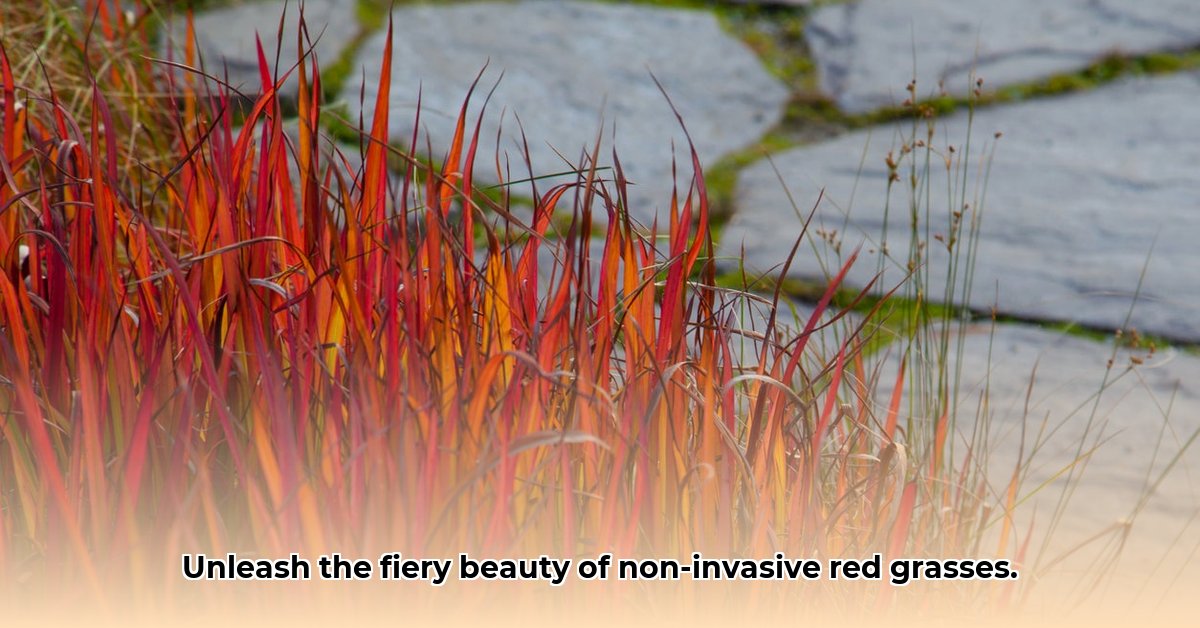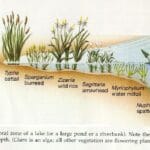Want to infuse your garden with the vibrant energy of red ornamental grasses? Their striking colors and textures can transform any landscape, adding drama and movement. However, some red grasses have a reputation for being invasive, quickly taking over gardens and disrupting local ecosystems. This comprehensive guide will equip you to choose stunning, non-invasive red grasses, ensuring a beautiful and responsible garden. For other options, you might also consider exploring beach grass options.
Understanding the Risks: Why Choose Non-Invasive Red Grasses?
Red ornamental grasses offer a captivating way to add visual interest to your garden. However, it’s essential to be aware of the potential downsides. Some species, like the notorious Imperata cylindrica (Japanese blood grass or cogon grass), are highly invasive. These grasses can spread aggressively via rhizomes (underground stems) and seeds, outcompeting native plants and wreaking havoc on the environment.
Choosing non-invasive alternatives ensures you can enjoy the beauty of red grasses without the ecological risks. You’ll create a stunning landscape while protecting the delicate balance of your local ecosystem.
Identifying Invasive Red Grasses: Know Your Enemy
The first step in responsible gardening is identifying the invasive culprits. Imperata cylindrica is a primary concern. It is characterized by:
- Aggressive Spread: Forms dense mats, quickly colonizing large areas.
- Blade-Like Foliage: Stiff, upright leaves with a sharp point.
- Reddish Tints: While some varieties are marketed for their red color, even these can revert to a more aggressive green form.
- White, Fluffy Seed Heads: Produces copious amounts of seeds that are easily dispersed by wind and water.
Consult local gardening experts, agricultural extension offices, or online resources with high-quality photos to accurately identify Imperata cylindrica and other invasive grasses in your region. It’s better to be safe than sorry!
Choosing the Right Red Grasses: Beautiful and Well-Behaved Varieties
Fortunately, many stunning red ornamental grasses offer the beauty you desire without the invasive tendencies. The key is to select sterile cultivars. These varieties have been specifically bred to prevent or significantly reduce seed production, minimizing the risk of unwanted spread.
Here are some exceptional non-invasive red grass options:
| Variety | Height (approx.) | Sun Exposure | USDA Zones | Characteristics | Considerations |
|---|---|---|---|---|---|
| Pennisetum setaceum ‘Fireworks’ | 2-4 feet | Full sun | 9-11 | Vibrant burgundy-red foliage with pink plumes. | Usually grown as an annual in cooler climates. |
| Schizachyrium scoparium ‘Standing Ovation’ | 3-4 feet | Full sun | 3-9 | Upright habit, blue-green foliage turning reddish-bronze in fall. | Excellent cold hardiness; provides stunning fall color. |
| Panicum virgatum ‘Shenandoah’ | 3-4 feet | Full sun | 4-9 | Green foliage that transitions to deep red in late summer and fall; airy seed heads. | Adaptable to various soil conditions; provides multi-season interest. |
| Andropogon gerardii ‘Red October’ | 5-6 feet | Full sun | 4-9 | Blue-green foliage that turns brilliant red in autumn. | Provides excellent winter interest. |
Important Note: Always verify with your nursery or supplier that the specific cultivar you’re purchasing is indeed sterile. While seed production is rare in sterile cultivars, it’s not impossible. Vigilance is always recommended.
Planting and Caring for Your Red Grasses: A Recipe for Success
Follow these steps to ensure your red grasses thrive:
- Choosing the Right Location: Select a spot that provides the appropriate amount of sunlight and matches the specific soil requirements of your chosen variety.
- Soil Preparation: Improve soil drainage and fertility by amending with compost or other organic matter. Red grasses generally prefer well-drained soil.
- Planting: Dig a hole twice as wide as the root ball and plant the grass at the same depth it was growing in the container. Space plants according to the mature size of the variety.
- Watering: Water thoroughly after planting and regularly during the first growing season to help the plants establish strong root systems. Once established, most red grasses are relatively drought-tolerant.
- Fertilizing: Apply a slow-release fertilizer in spring to promote healthy growth. Avoid over-fertilizing, as this can lead to excessive foliage growth and weaker stems.
- Pruning: Cut back dead foliage in late winter or early spring before new growth emerges.
Long-Term Management: Staying Vigilant for a Healthy Garden
Even with non-invasive varieties, regular monitoring is crucial. Here’s what to look for:
- Unexpected Spread: Check for any signs of the grass spreading beyond its intended area.
- Seed Production: Although sterile cultivars are unlikely to produce seeds, monitor for any flower heads and remove them promptly if they appear.
Consider planting potentially aggressive varieties in containers or raised beds to contain their growth, even if they are considered “non-invasive.”
Designing with Red Grasses: Adding a Fiery Touch to Your Landscape
Red grasses can be used in various ways to enhance your garden’s aesthetic:
- Accents: Use them as focal points in borders or rock gardens.
- Mass Plantings: Create a dramatic statement by planting large groups of the same variety.
- Containers: Add color and texture to patios and balconies.
- Mixed Borders: Combine red grasses with other plants that offer contrasting colors, textures, and heights.
Some excellent companion plants for red grasses include:
- Purple Coneflower (Echinacea purpurea)
- Russian Sage (Perovskia atriplicifolia)
- Black-Eyed Susan (Rudbeckia hirta)
- Sedum (Sedum spp.)
By choosing non-invasive varieties and following these guidelines, you can enjoy the breathtaking beauty of red ornamental grasses while safeguarding the health of your garden and the environment. Happy gardening!
















